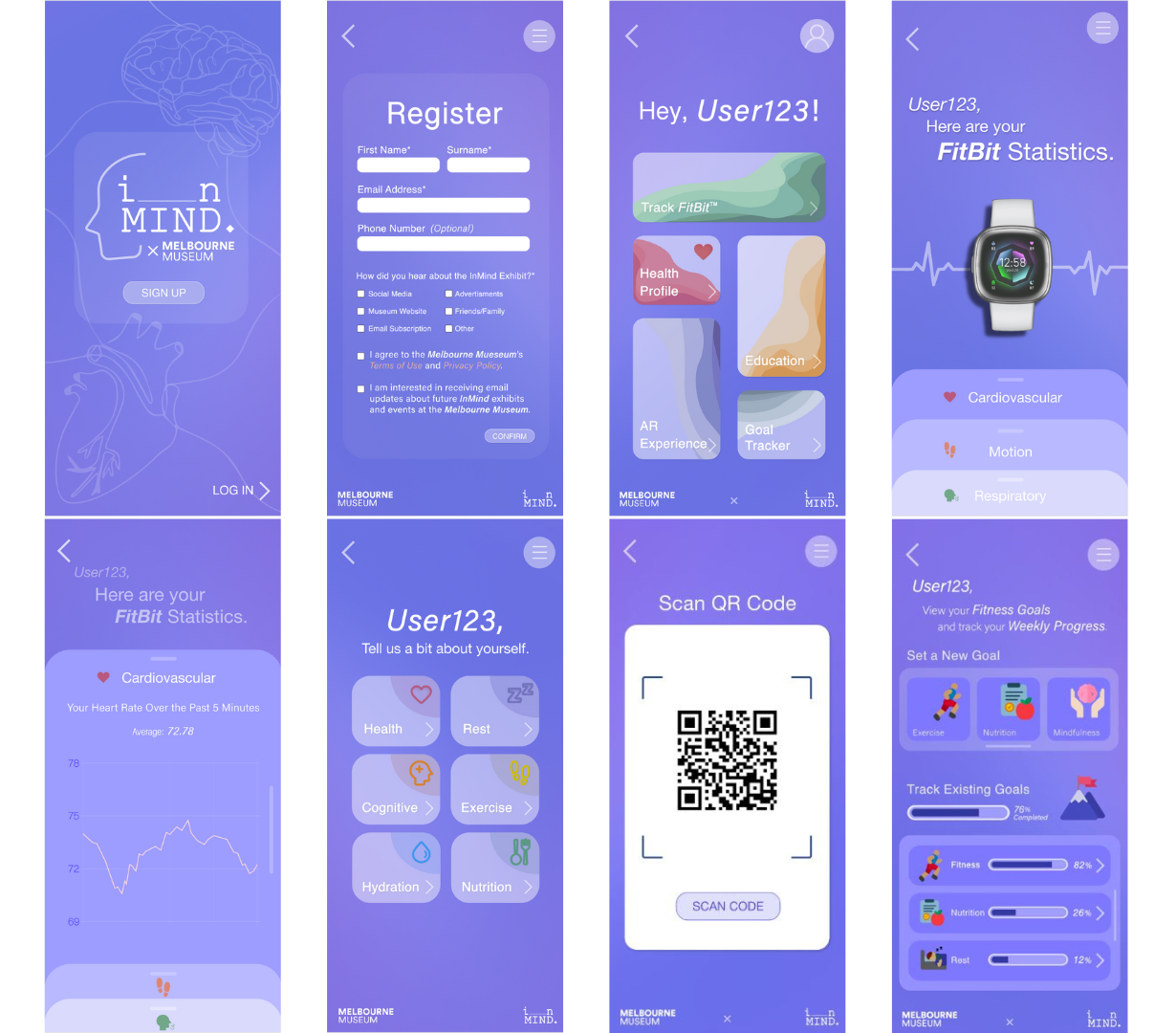
Exploring Self-Care Through AR Technology at Melbourne Museum
Self-care and well-being are essential components of a healthy lifestyle, yet many people struggle with integrating effective practices into their daily routines. As the need for greater access to healthcare grows, Melbourne Museum sought to address this challenge by creating an engaging and educational exhibition that leverages technology to promote self-care. To appeal to a diverse audience, we designed the InMind Exhibition at Melbourne Museum, focusing on educating visitors about maintaining and improving mental and physical health through self-care. The exhibit features a majestic transparent model of the human body and various 3D models of vital organs. Our goal was to create an immersive experience that combines contemporary design principles with cutting-edge AR technology.
Key Features:
1. AR Integration: Visitors use the InMind app to scan QR codes placed next to each model, bringing the organs to life through AR. This allows users to select specific areas and access detailed information about them. For example, selecting the aorta on the heart model will highlight the corresponding part on the physical exhibit.
2. Interactive Health Education: The app enables users to visualise the impact of lifestyle choices, such as exercise levels, diet, and substance usage, on different organs. Changes are reflected in both the app and the physical models, enhancing understanding through real-time interaction. Additional advice is provided on how to keep specific organs healthy.
3. Goal and Self-Care Tracking: To encourage ongoing self-care, users can set daily and monthly personal goals within the app. The app sends reminders to complete these goals, such as drinking water or exercising, and tracks progress over time. This feature is accessible at home, allowing users to continue benefiting from the exhibit's educational content beyond their visit.
4. Wearable Component: Sponsored by Fitbit, the exhibit includes 100 Fitbits for visitors to use during their visit. These devices link to the app, providing real-time health tracking and enhancing the interactive experience.
Impact:
By combining AR technology with health education, the InMind Exhibition provides visitors with valuable tools to manage their health and visualise the effects of their lifestyle choices on their bodies. This project underscores the potential of small-scale technology in healthcare education, fostering greater awareness and encouraging visitors to implement self-care practices in their daily lives.
Through this innovative exhibit, Melbourne Museum successfully enhances access to physical and mental health education, promoting sustainable self-care and well-being for all visitors.
My Roles:
This project was a collaborative effort where I served as Project Manager, 3D Visualiser, UI Designer, Researcher, Finance Assistant, and Video Editor. Working closely with my team, we successfully integrated various elements to create a cohesive and educational experience for the visitors.
Academic Context:
This project was developed as part of a university course, using a hypothetical brief provided for academic purposes. It was not commissioned by or created for the Melbourne Museum but served as a valuable exercise in applying design principles and technology to real-world challenges.
